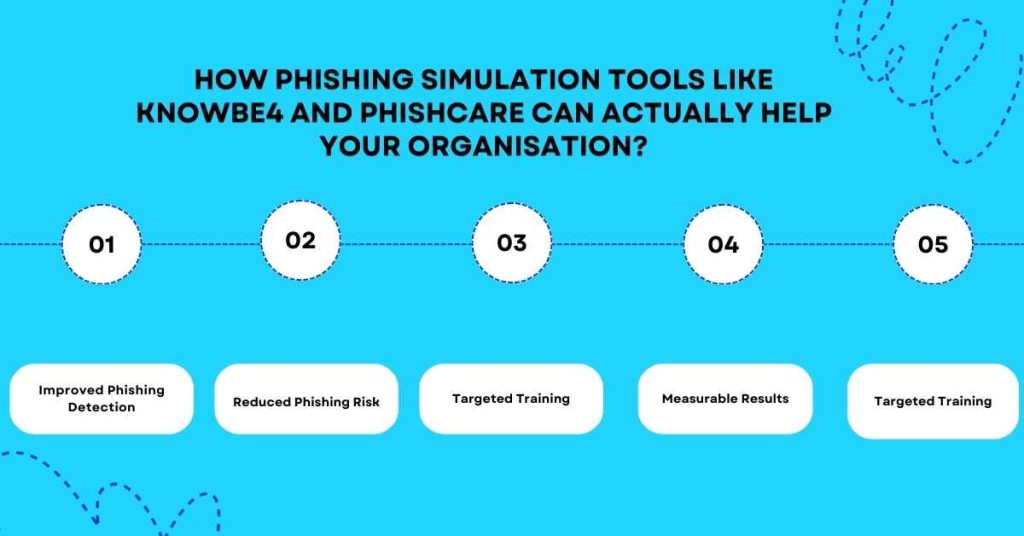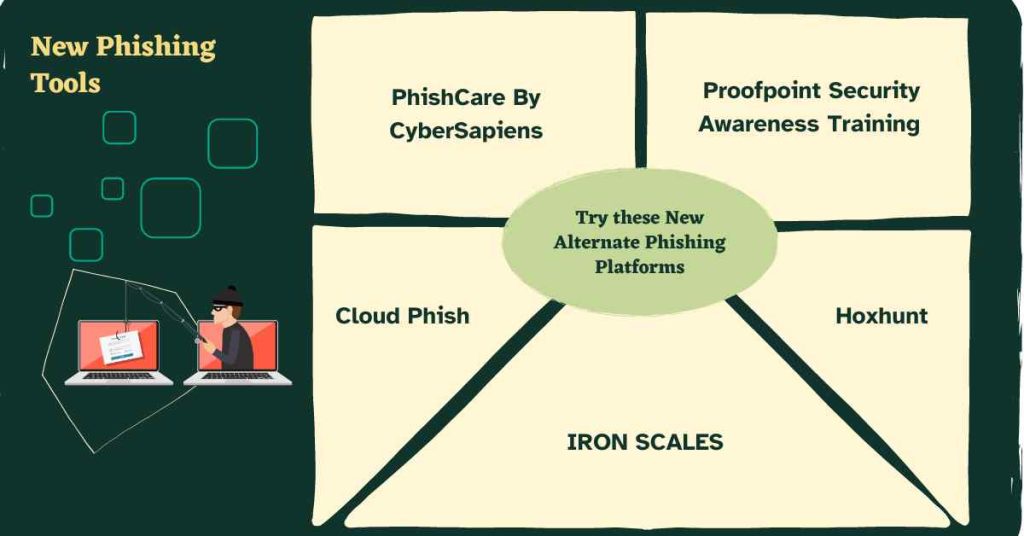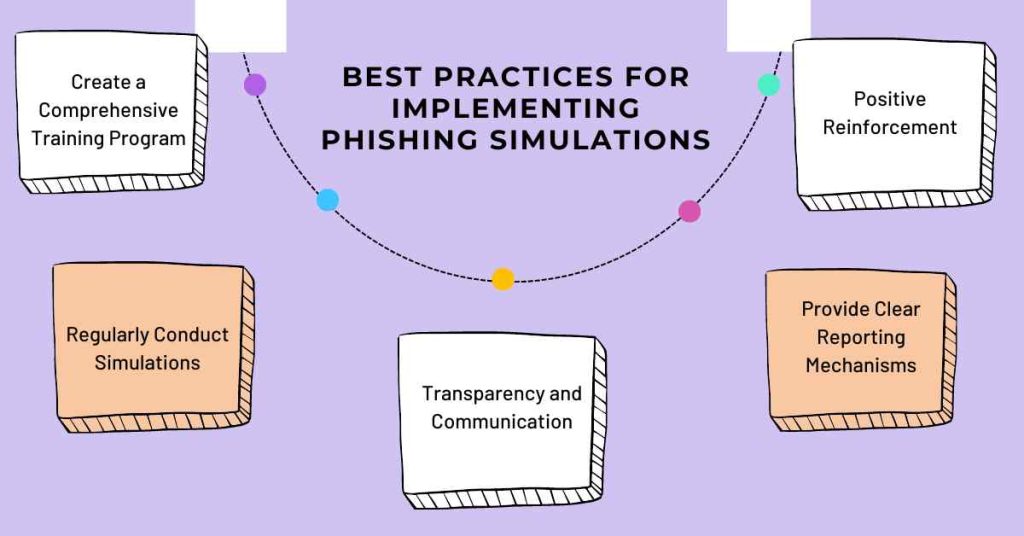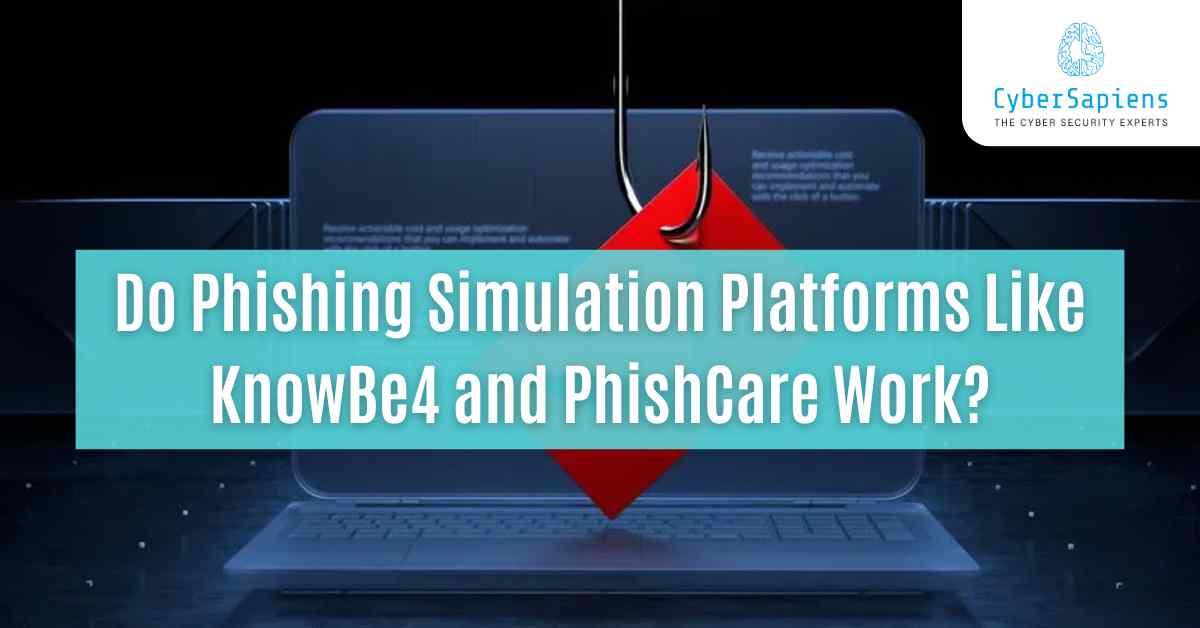Currently, a ‘phishing’ attack is a persistent threat in digital space. This significantly raises the risks of exchanging personal details and also of choosing links that may be connected to viruses.
Now a critical part of the fight for protecting information from these attacks we have phishing simulation platforms, but are these truly efficient?
In this blog, we have thoroughly researched and written detailed information on the blog called “Do Phishing Simulation Platforms Like KnowBe4 and PhishCare Work?“.
How does Phishing Simulation Work?
Phishing simulation platforms allow sending spam messages (fake emails) among the organization’s staff. The use of these emails is really meant to realize the obvious phishing cases, including urgency, spoofed sender addresses, and appealing subject lines.
However, as these simulations take place in the safe environment of laboratories, the levels of threat there is minimal therefore nothing that could harm people is possible even though the employees may have pretend attacks.
Subsequently, the system monitors how staff members engage in these mockups. Did they end up clicking on the malicious URL? Did they input any kind of credentials or options?
Did they click the red button on the top right-hand corner of the page, to mark the email as suspicious? Such information gives us the key to assessing personnel’s susceptibility to adverse effects and points the direction for the enhancement of safety training.
How Phishing Simulation Tools like KnowBe4 and PhishCare can actually help your organisation?

Yes, Phishing simulation platforms like KnowBe4 and PhishCare offer a multitude of benefits for organizations looking to strengthen their cybersecurity posture. Here are some key advantages:
1. Improved Phishing Detection
With simulations, study participants will gain the understanding and skills to recognize warning signs of emails such as impersonal greetings, grammar and suspicious sender’s addresses.
This allows them to make decisions that are knowledge-based regarding authentic mail IDs so that it reveals the impossibility of becoming a victim of real phishing attempts.
2. Increased Security Awareness
Constantly working on simulations helps build a security-conscious culture within the organization. Employees start to be more careful and recognize that sending messages to shady links can invite malware or access to personal details.
3. Reduced Phishing Risk
Researchers in security find that using phishing simulation platforms will have a significant effect on preventing successful phishing attacks.
According to the findings of the USCare report, there was a significant drop in employee vulnerability to threats – from 70% at the initial meeting point to a mere few per cent after repeated training – which corresponds to the effectiveness of this method.

4. Targeted Training
Through simulations, the organizations may gather employees’ feedback and identify the weak spots and then they may structure the training programs which solve concrete vulnerabilities.
This guarantees that training is needed at the moment and specifically targets the most widespread phishing methods.
5. Measurable Results
The e-learning evaluation model measures the responses to the content and the level of accountability of employee teams, and it provides quantifiable data on their behaviour.
Organizations can have these KPIs (Key Performance Indicators) like Click-through rate, reported malicious emails and successful phishing attempts under their toolbox, to gauge the effectiveness of their training programs and bring necessary adjustments to them.
How do Phishing Simulation Platforms like Knowbe4 and PhishCare actually work?

Phishing simulation platforms like KnowBe4 and PhishCare are designed to test and improve an organization’s defences against phishing attacks, which are fraudulent attempts to obtain sensitive information by disguising it as a trustworthy entity in electronic communication.
Here’s a general overview of how these platforms work
1. Simulated Phishing Attacks
The main goal for these platforms is to imitate real-life phishing emails, texts, or voice messages so they can slip through the defences and harvest sensitive information.
The messaging of these emails is contrived and contains social engineering tricks to fool users into performing actions such as clicking on links, downloading attachments, or filling in forms on a phishing website.
2. Employee Training
The employees who go through the customers’ phishing simulations, receive smart education content, which helps them spot and avoid real-life phishing attempts. That is the way of an undivided front in fighting such threats.
3. Data Collection and Analysis
The platforms monitor how employees interact with these simulations quantify the number of clicks and suggest other activities that employees can do.
This data assists organizations in determining gaps in security leaving them for additional training required in some sections.
4. Continuous Improvement
After implementing the measures, the security department of the firm is able to adapt its awareness programs independently, run diverse training sessions, or perform extra simulations in order to enhance its employees’ phishing knowledge.
Try these New Alternate Phishing Platforms

1. PhishCare By CyberSapiens: Latest Best phishing Platform
An innovative platform that is Known for its ease of use and focus on real-world simulations, providing a realistic experience for employees.
2. Cloud Phish
A platform that targets small and medium enterprises (SMEs) single out its intuitive interface and reasonable pricing to be irresistible. The phishing app Cloud Phish aims to be easy to adapt to and supplies customizable templates for general purposes of SMB security problems.
It also has a pre-written report mechanism that produces vivid graphs to monitor the whole team and discover the places for further growth.
3. Hoxhunt
Features elements of EVS and social learning which helps to keep learners engaged and reinforce what has been taught.

4. Proofpoint Security Awareness Training
Provides security awareness surface solution which includes phishing scam simulations, compliance training and vulnerability assessment.
5. IRON SCALES
Focuses on automated phishing detection and response, aiming to prevent real-world attacks alongside employee training.
Best Practices for Implementing Phishing Simulations

To maximize the effectiveness of phishing simulation platforms, organizations need to follow the best practices:
1. Create a Comprehensive Training Program
If integrated with other security awareness training materials, for example, video lectures, interactive modules, and phishing campaigns, the most effective phishing simulations can be carried out.
2. Regularly Conduct Simulations
Technical preference frequency is acute. Simulators, if used in excess, can cause to desensitization, and also too infrequent use can’t strengthen your sufficient. The development of national identity and the acknowledgement of others’ identities must take place simultaneously, and the two should be equally important for society.
3. Transparency and Communication
Employees must be aware of the use of phishing simulations and leadership of the reason behind those simulations. The crystal clear communication lets the employees see the simulated training as learning rather than peaking into an accusing measure.
4. Provide Clear Reporting Mechanisms
Give employees the rights and tools for easy adoption of reporting suspicious emails when a training session is being conducted and used every day.
5. Positive Reinforcement
Unlike reprimanding employees who are deceived into doing so, reward those who care and report such messages by recognizance. This induces a culture upholding an attitude of security awareness dialogue, and practice.
Conclusion
One of the most useful instruments for strengthening cybersecurity consciousness and prevention of phishing attacks is the platform that gives a simulating model of this kind of attack.
By applying them together with other security measures and continuous evaluation programs, organizations can build cybersecurity detection consciousness and other relevant skills among employees to help them recognise imminent risks and respond efficiently to ever-growing cyber threats.
FAQs: Are Phishing Simulation Platforms Like KnowBe4 And PhishCare Work?
1. Are phishing simulations legal?
Ans: Absolutely Phishing simulations are a legitimate training method used by organizations to educate employees about cybersecurity threats. However, transparency is key. Employees should be informed about the use of simulations and understand their purpose.
2. How often should I run phishing simulations?
Ans: There’s no one-size-fits-all answer. The ideal frequency depends on your organization’s size, security posture, and employee susceptibility. However, conducting simulations too frequently can lead to fatigue, while infrequent simulations won’t provide enough reinforcement. Aim for a balance, perhaps monthly or quarterly campaigns.
3. What happens if an employee clicks on a phishing link in a simulation?
Ans: Don’t punish them Phishing simulations are designed to identify knowledge gaps, not to penalise employees. Instead, use it as a learning opportunity. Provide them with resources and training to help them recognise phishing tactics in the future.
4. Can phishing simulations be customised?
Ans: Yes, Most platforms allow customization of phishing emails. You can tailor scenarios to specific departments, roles, or even individual employees based on their past performance in simulations. This personalization can significantly enhance the effectiveness of training.
5. How much do phishing simulation platforms cost?
Ans: Costs vary depending on the platform, features offered, and the number of users. Many vendors offer tiered pricing plans, with options for small businesses and large enterprises. Consider exploring free trials or demos before committing to a specific platform.
6. What are some alternatives to phishing simulations?
Ans: While simulations are a valuable tool, they aren’t the only option. Security awareness training programs that incorporate interactive modules, real-world case studies, and role-playing exercises can also be effective. Additionally, penetration testing can identify security vulnerabilities before they are exploited by attackers.
7. Is KnowBe4 a good phishing simulation platform?
Ans: KnowBe4 is a popular platform offering a range of phishing simulation features, training modules, and customization options. However, it’s important to compare features and pricing with other vendors before making a decision. Consider factors like your specific needs, budget, and user base.
8. What are some limitations of phishing simulations?
Ans: Phishing simulations can lead to user fatigue if conducted too frequently. Additionally, they may not fully capture the sophistication of real-world social engineering tactics used by attackers. Furthermore, simulations might struggle to keep pace with the ever-evolving technical aspects of phishing attacks.
9. How can I measure the success of my phishing simulation program?
Ans: Track key metrics like click-through rates on phishing emails, reported emails, and successful phishing attempts. Monitor these metrics over time and compare them before and after implementing simulations. This data will help you assess the effectiveness of your training program and identify areas for improvement.
10. How can I ensure a successful phishing simulation program?
Ans: Transparency and communication are crucial. Inform employees about the program’s purpose and solicit their feedback. Regularly update simulation scenarios to reflect evolving threats. Combine simulations with other security awareness training elements for a comprehensive approach. Finally, use positive reinforcement to incentivize participation and create a culture of cybersecurity awareness.












